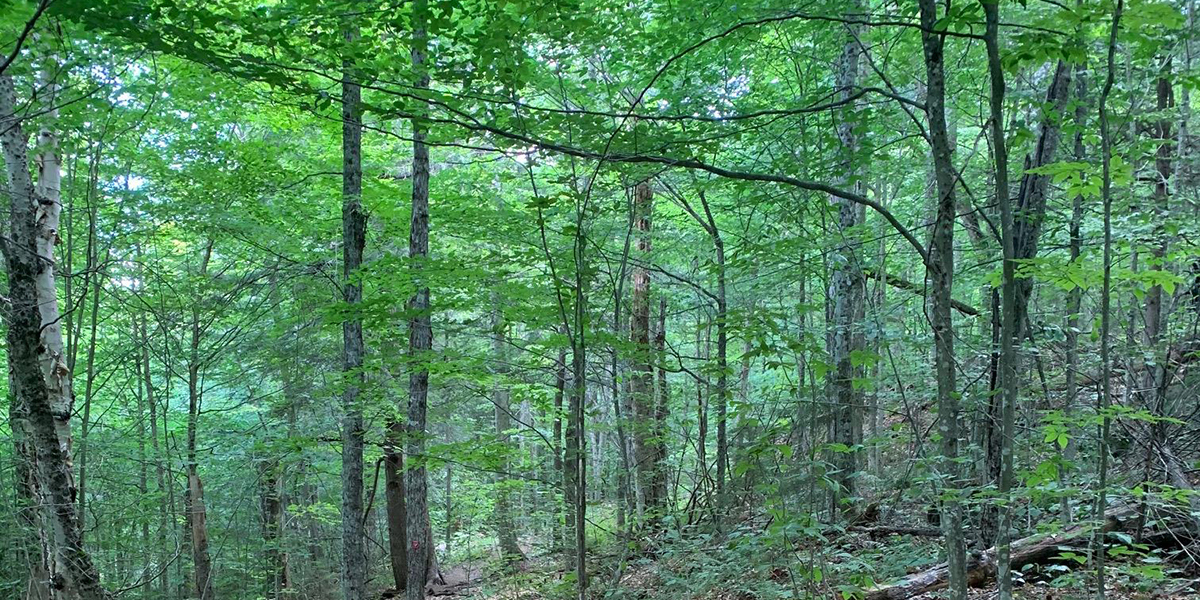Recent Headlines

Climate Mitigation Potential from Forest Regrowth Explored
Using data from more than 1,500 sources, researchers concluded the maximum climate mitigation potential from natural forest regrowth is 11 percent lower than previously reported due to the use of overly high rates for the location of potential new forest. Distinguished Teacher Professor Russell Briggs is a co-author of the study recently published in Nature.
To constrain global warming, greenhouse gas emissions need to be contained and excess atmospheric carbon dioxide captured, according to the study abstract.
"Regrowing natural forests is a prominent strategy for capturing additional carbon, but accurate assessments of its potential are limited by uncertainty and variability in carbon accumulation rates," researchers state in the study.
The study examined the accumulation rates of carbon under natural reforestation, explained Briggs, director of the Division of Environmental Science. "In forest natural regeneration - forests that come back on their own - for the first 30 years, the mitigation potential for climate change is part of it is balancing out the carbon."
"That's the idea behind this, it's called the natural climate solution so it's a 'natural' way to help mitigate global climate change," Briggs said.
However, carbon accumulation rates differ, so to assess why and where rates differ, researchers compiled geo-referenced measurements of carbon accumulation.
Briggs said they screened more than 11,000 published papers from the initial literature search, and narrowed it down to 256 studies focused on natural forest regrowth that included above or below ground carbon pool data meeting our selection criteria, which include georeferencing.
"Essentially this was all done via computers. My contributions focused on screening papers and extracting data and converting organic matter to organic C. Co-authors used GIS (Global Information System) to extrapolate those data across the globe a huge part of this," said Briggs.
"Because climatic factors explain variation in rates better than land-use history, researchers combined the field measurements with 66 environmental covariates to create a global, one-kilometer-resolution map of potential aboveground carbon accumulation rates for the first 30 years of natural forest regrowth," according to the study.
"The map shows more than a 100-fold variation in accumulation rates across the globe and indicates that default rates from the Intergovernmental Panel on Climate Change (IPCC) may underestimate aboveground carbon accumulation rates by 32 percent on average and do not capture eight-fold variation within ecozones."
Researchers concluded the maximum climate mitigation potential from natural forest regrowth is 11 percent lower than previously reported owing to the use of overly high rates for the location of potential new forest.
"Carbon accumulates faster in warmer and wetter areas where the production is greater," said Briggs. "Now you've got this map at a one-kilometer grid-scale across the world. This information can now be used to better formulate plans for climate mitigation."
Briggs entered the research a couple of years ago while spending the summer at The Nature Conservancy (TNC) "just mining data from the published literature," he said.
"We were just going through data and papers and extracting those data and putting them into a huge access database," he explained. "Susan Cook-Patton led a tremendous effort among the co-authors to refine the ideas after the first submission came back with some criticisms."
Almost as important as the research results are the data compiled from the literature. Said Briggs, "That was huge."